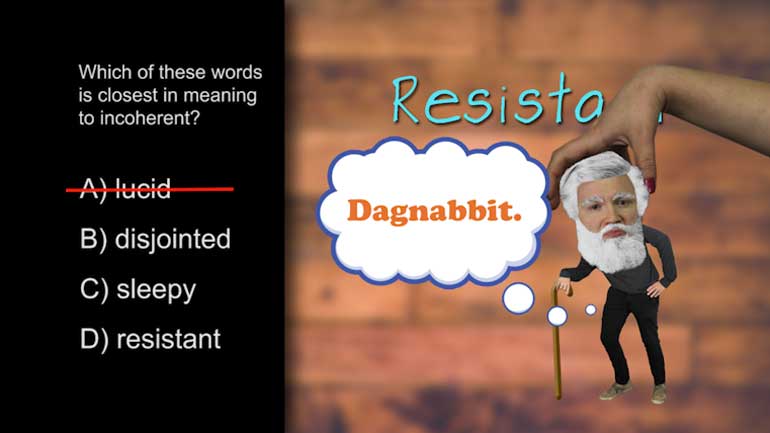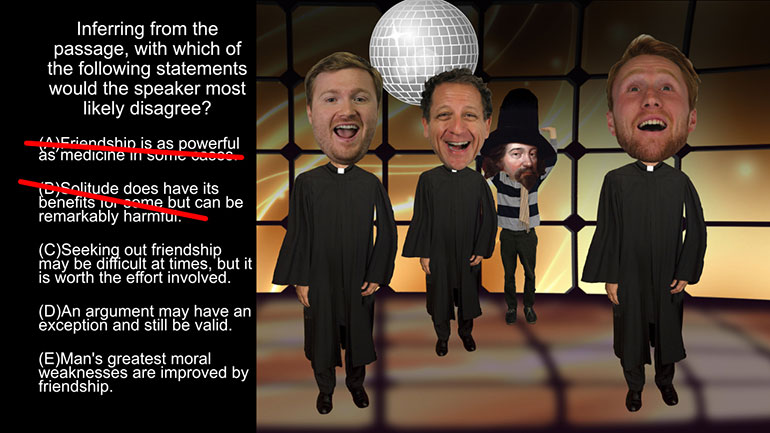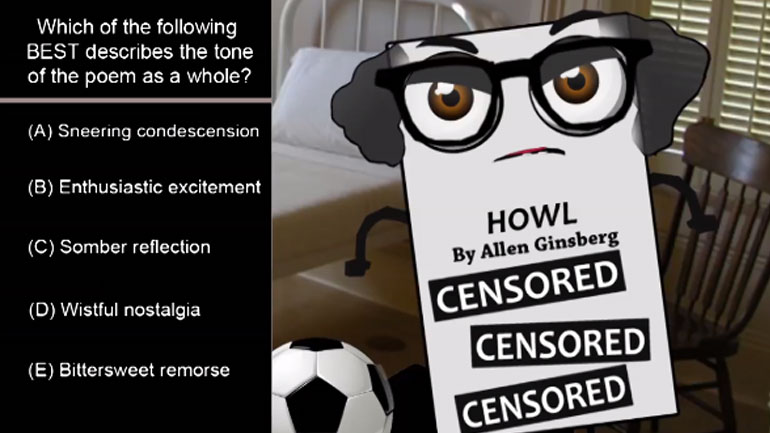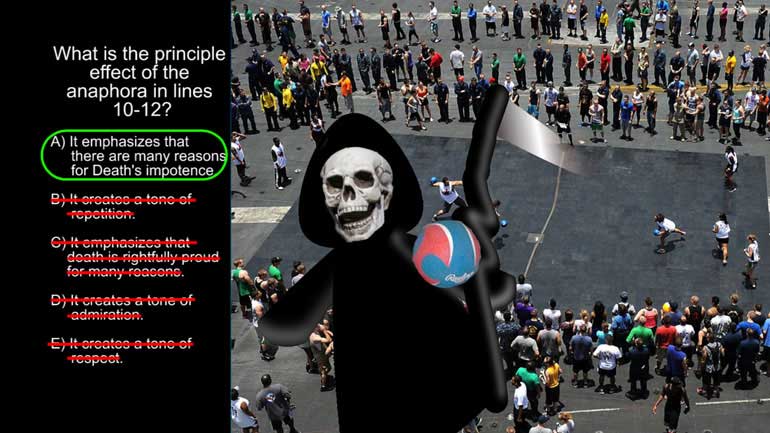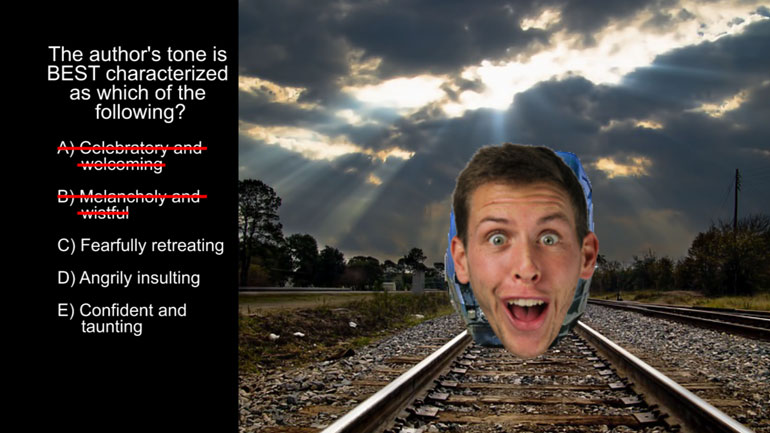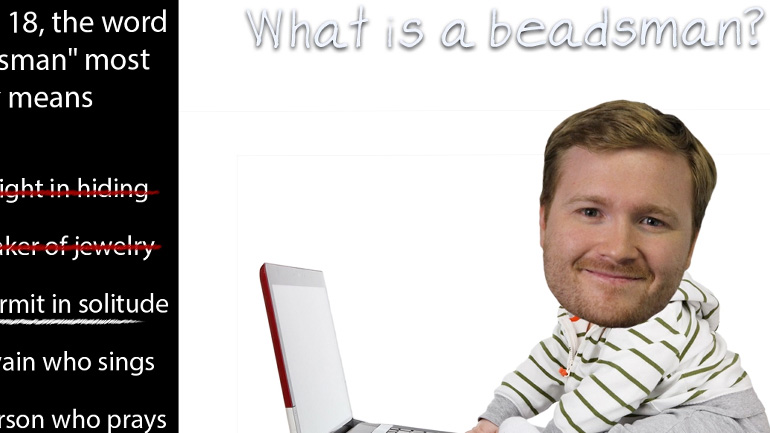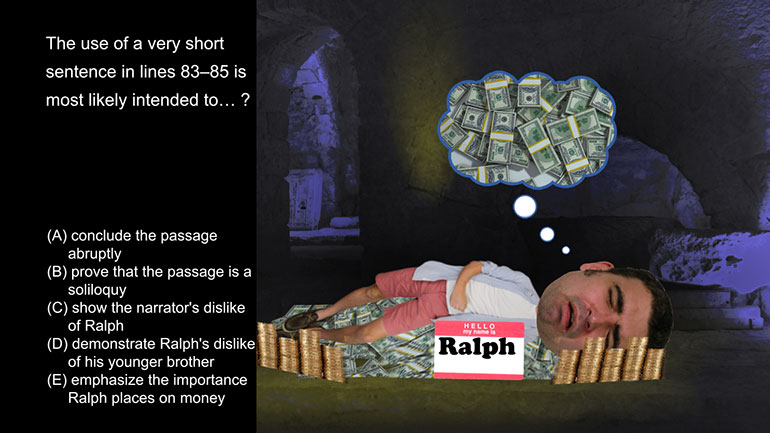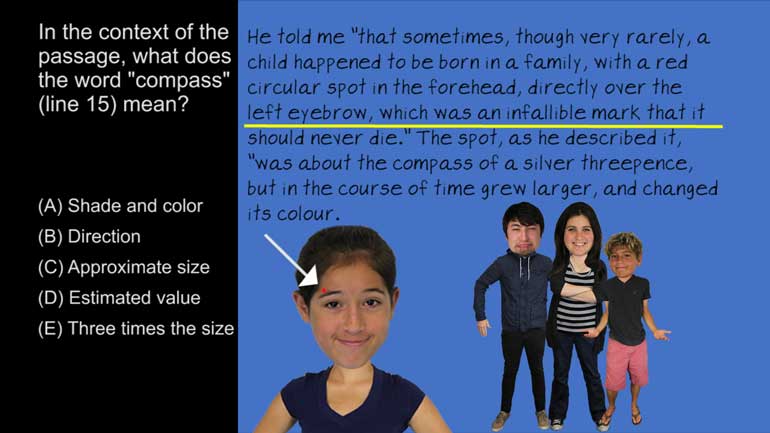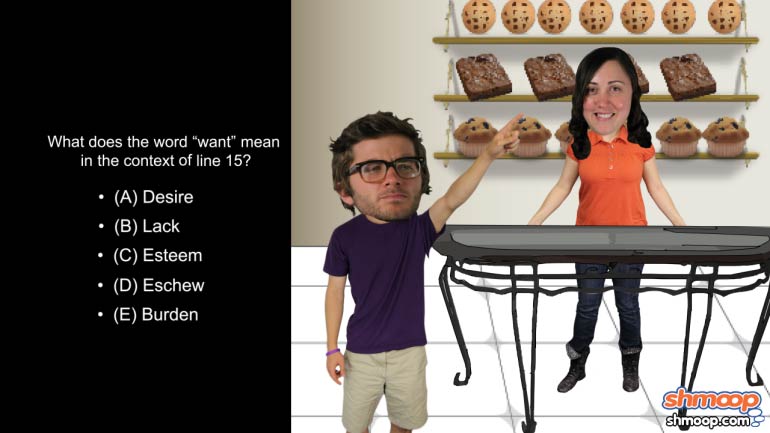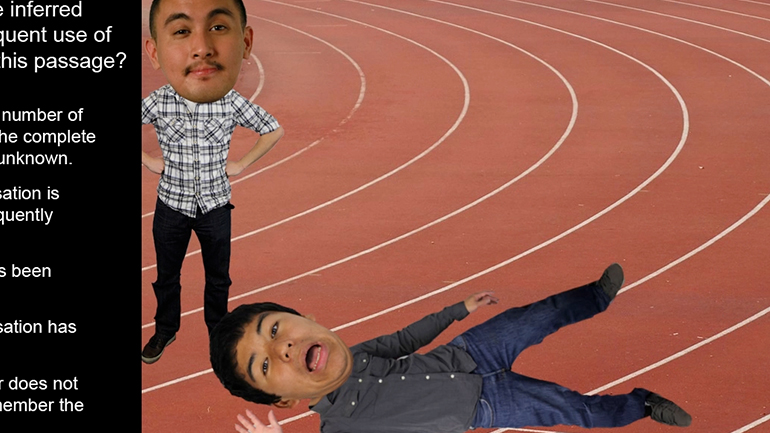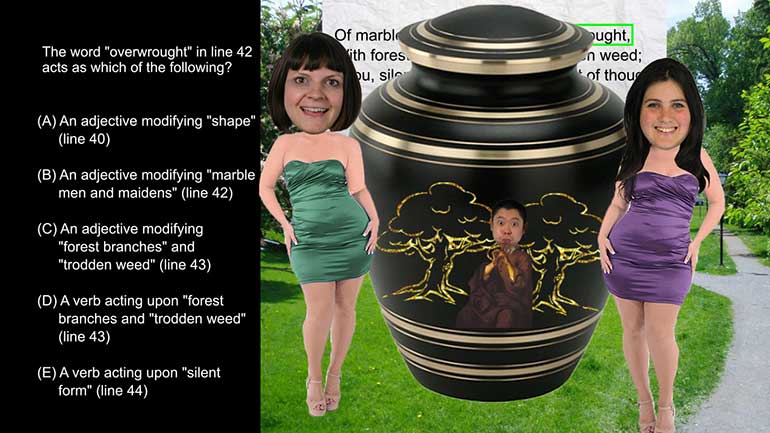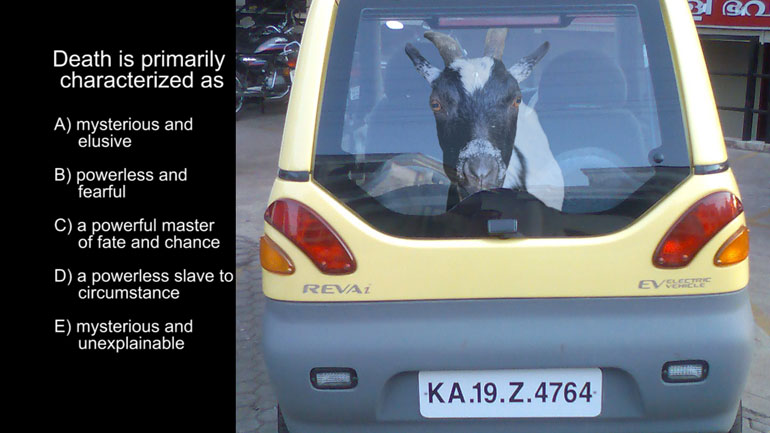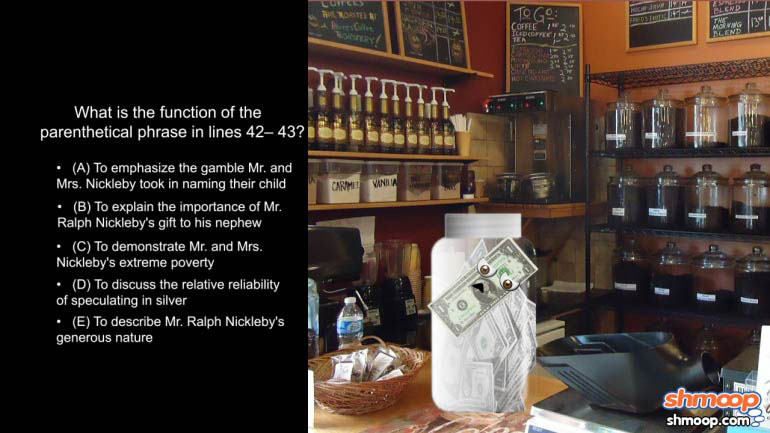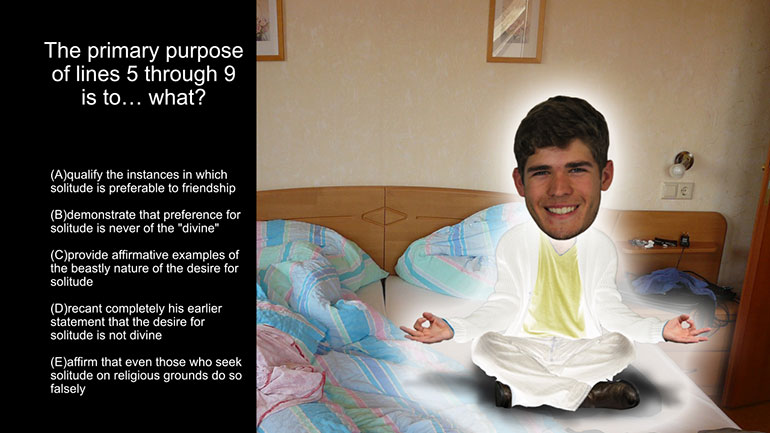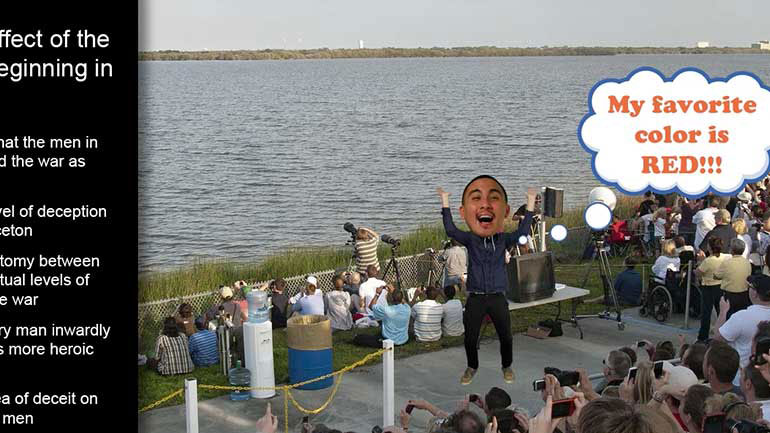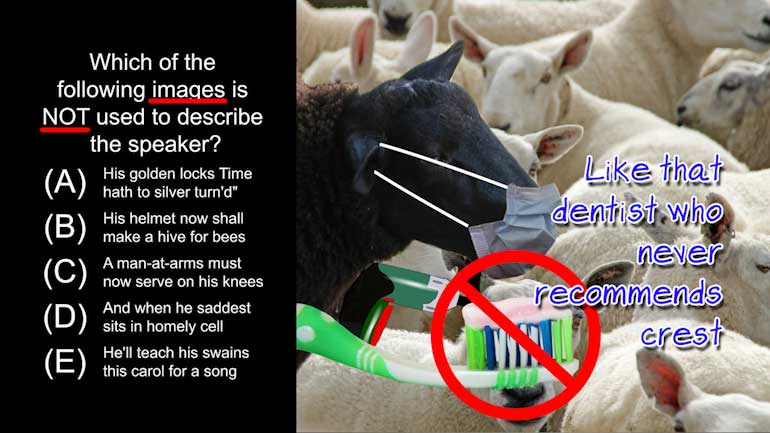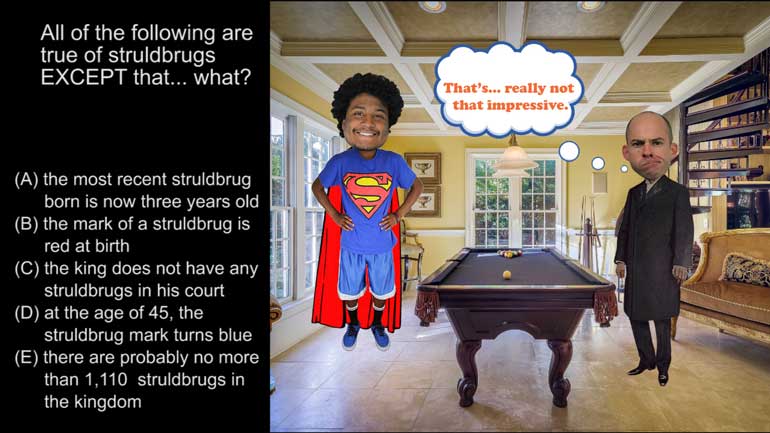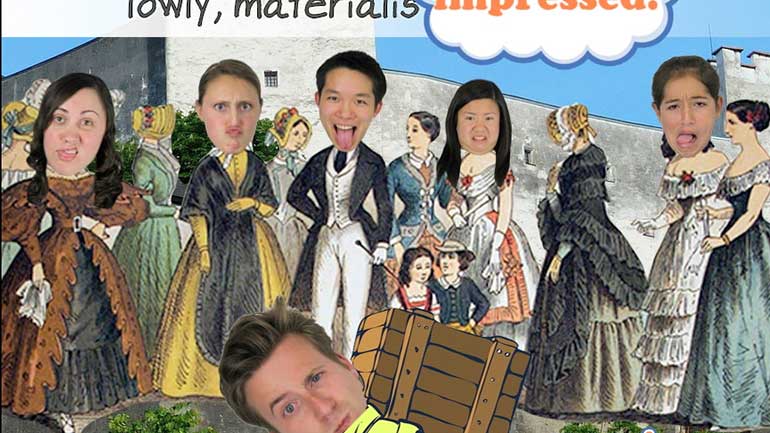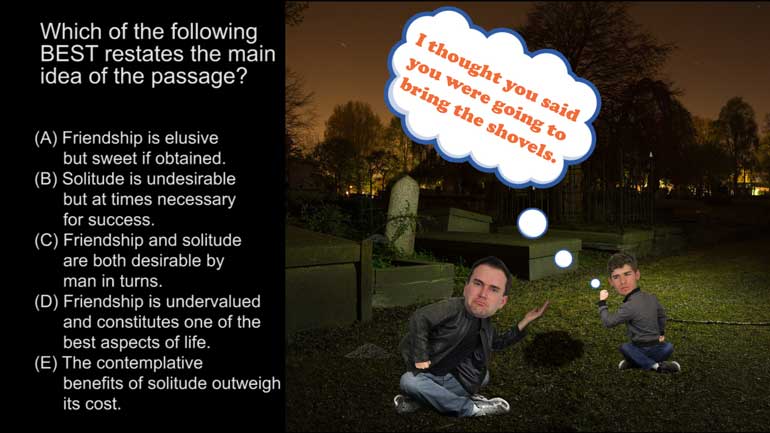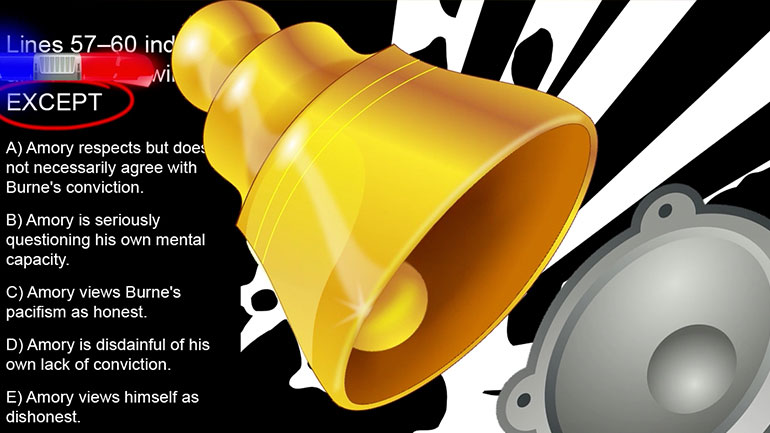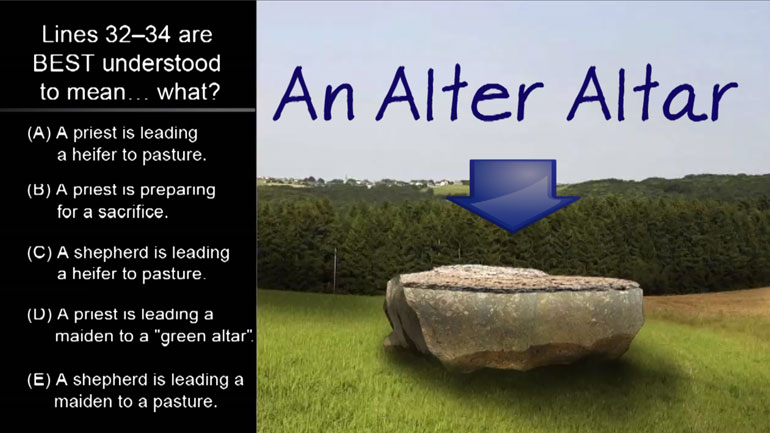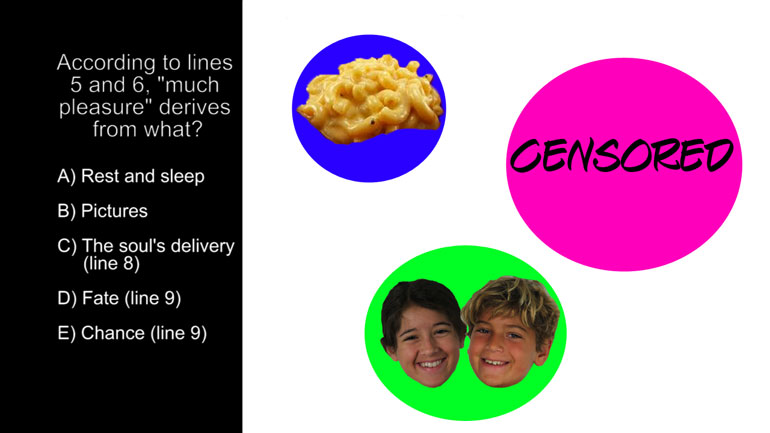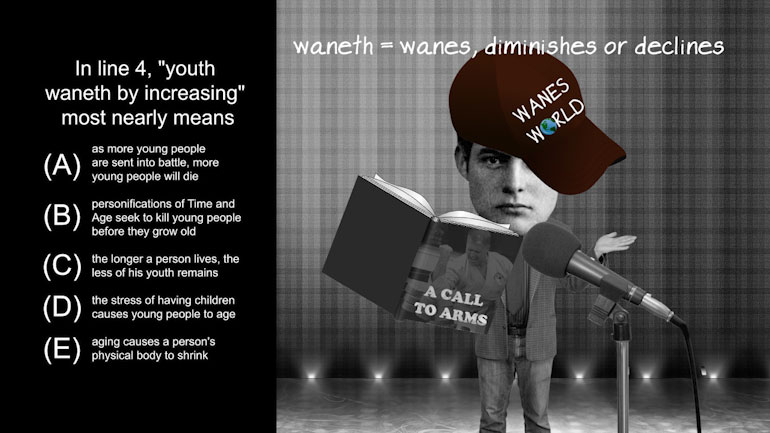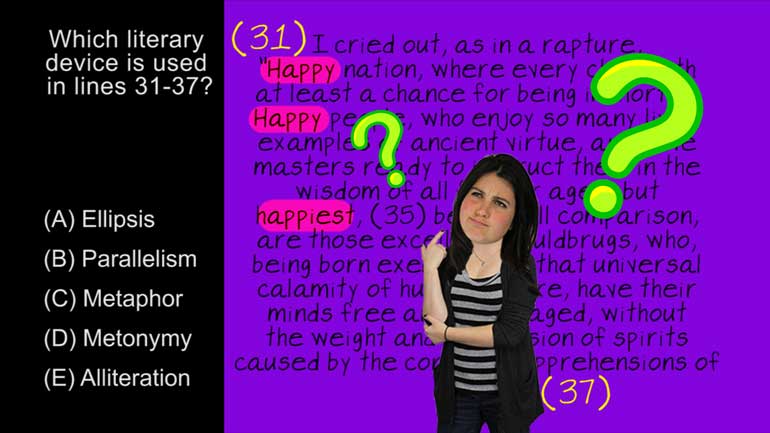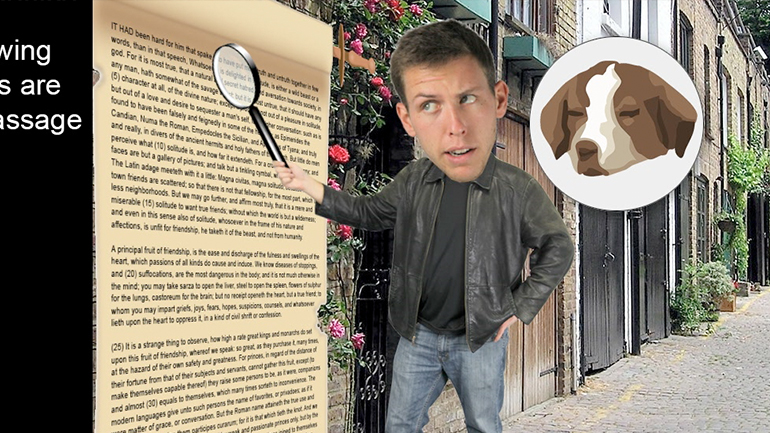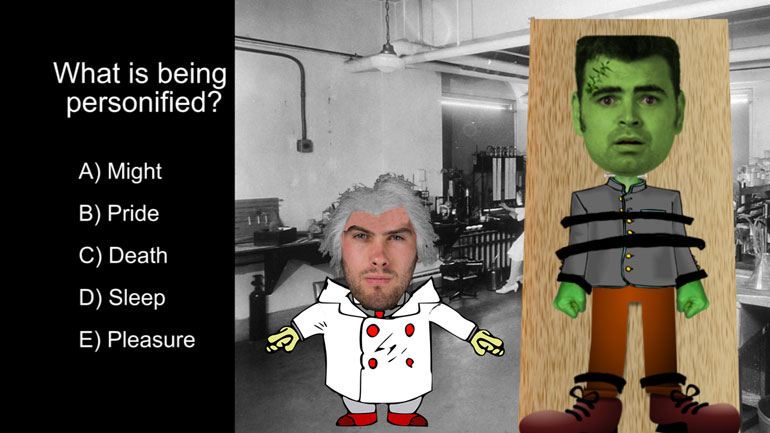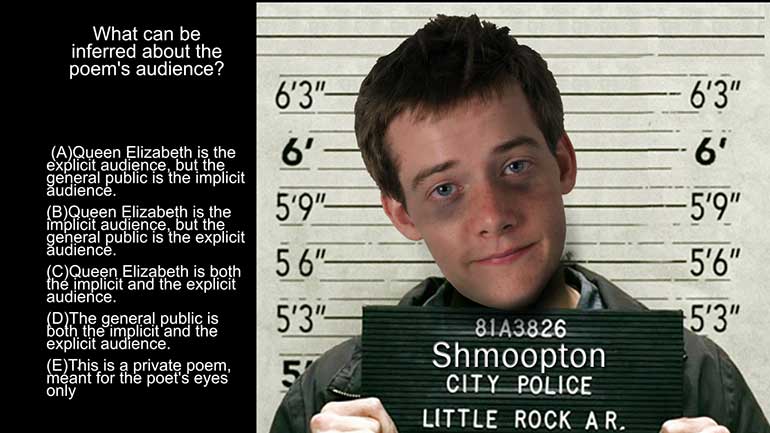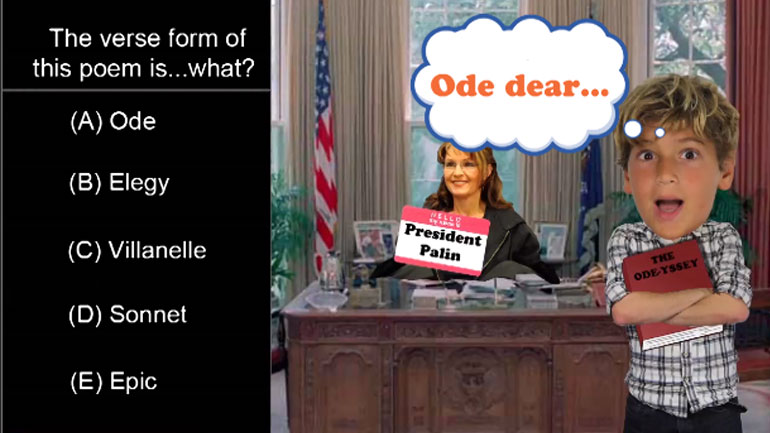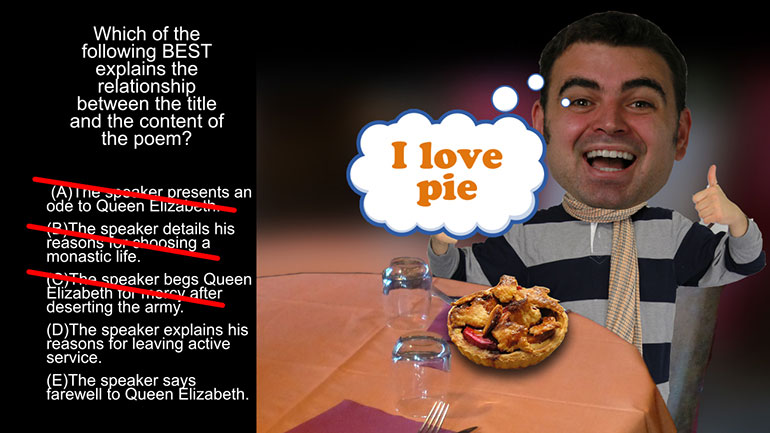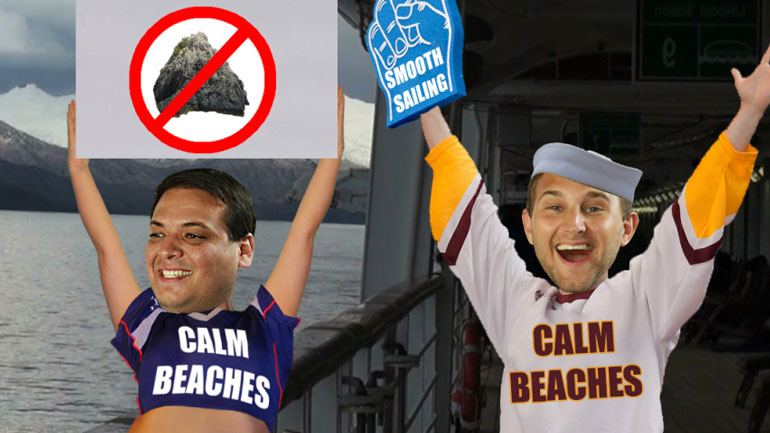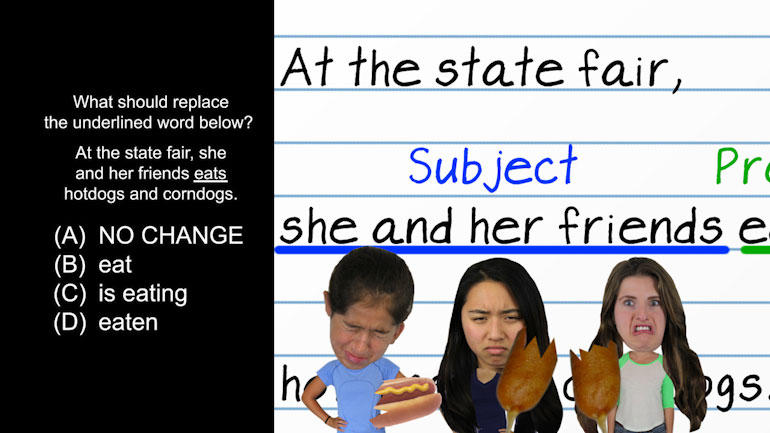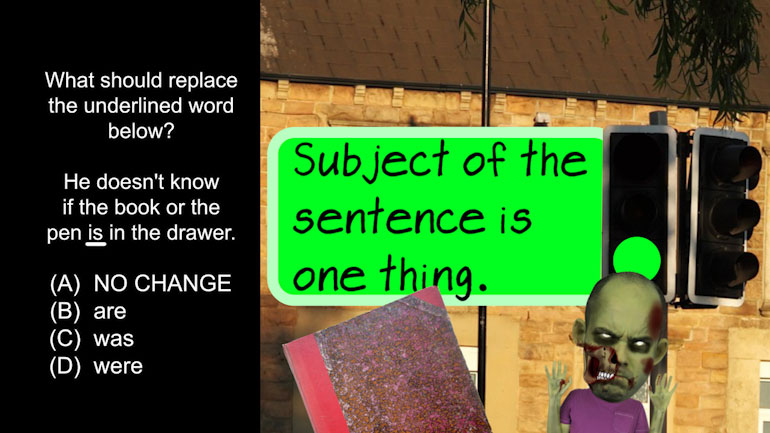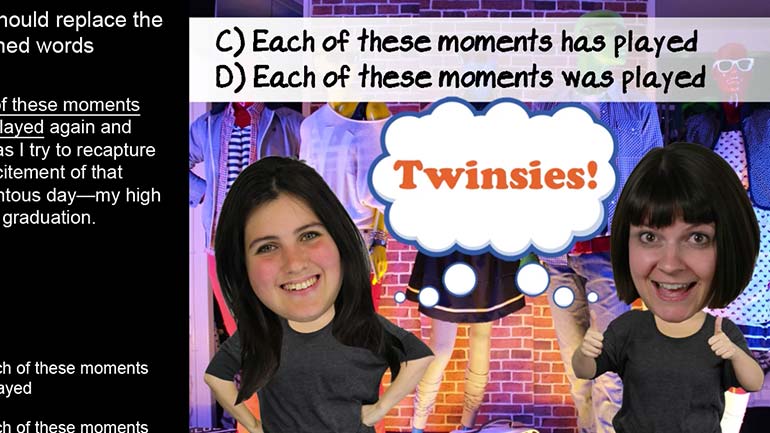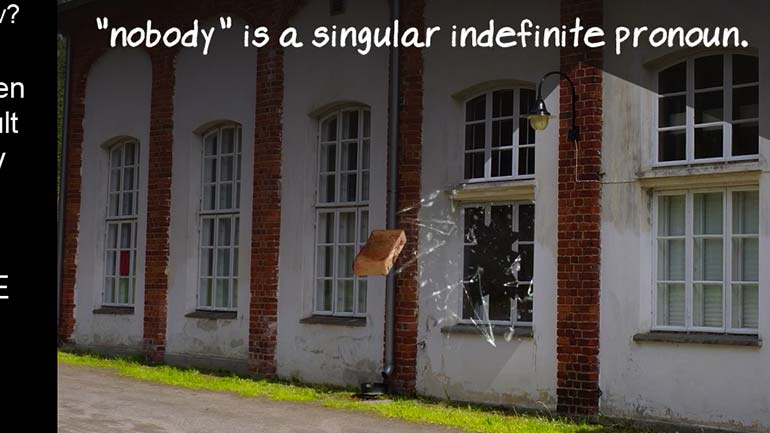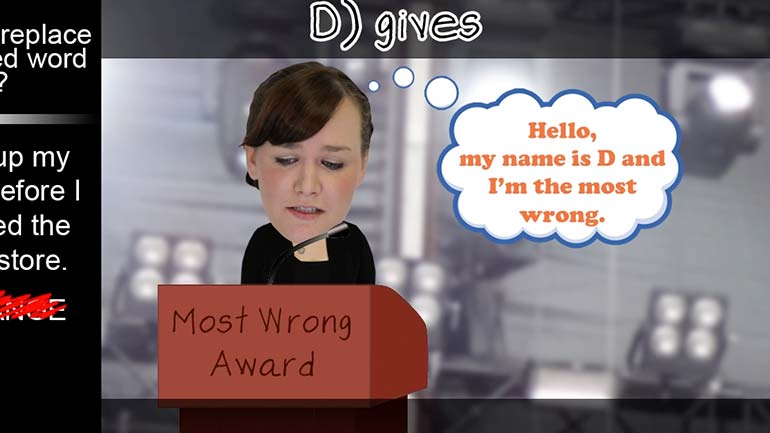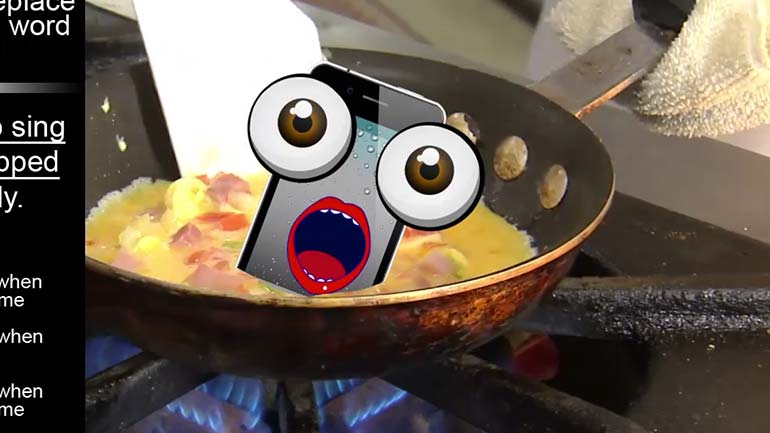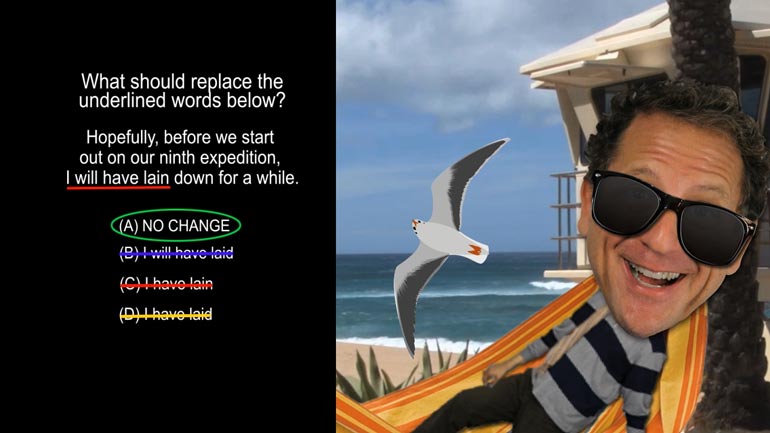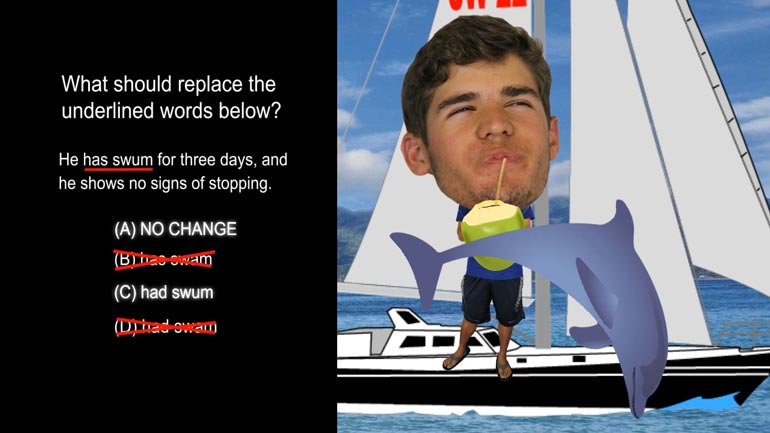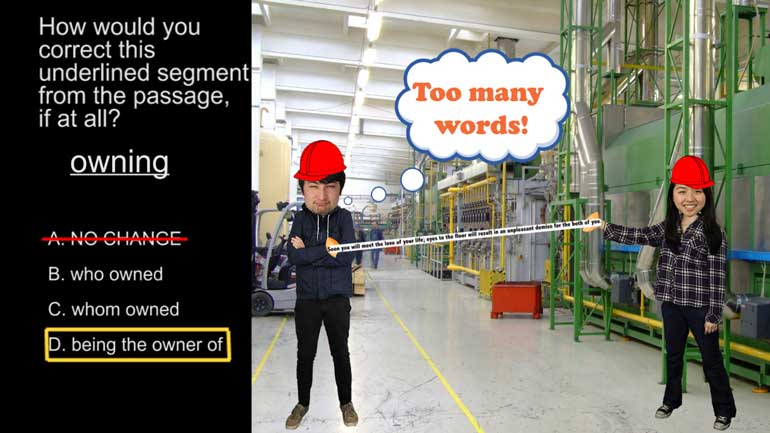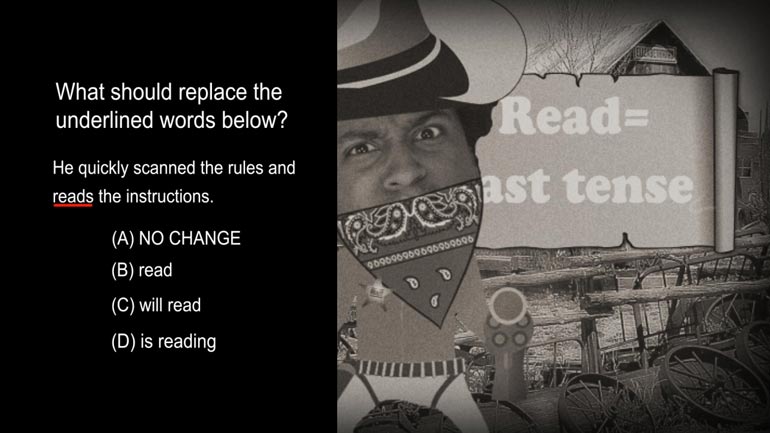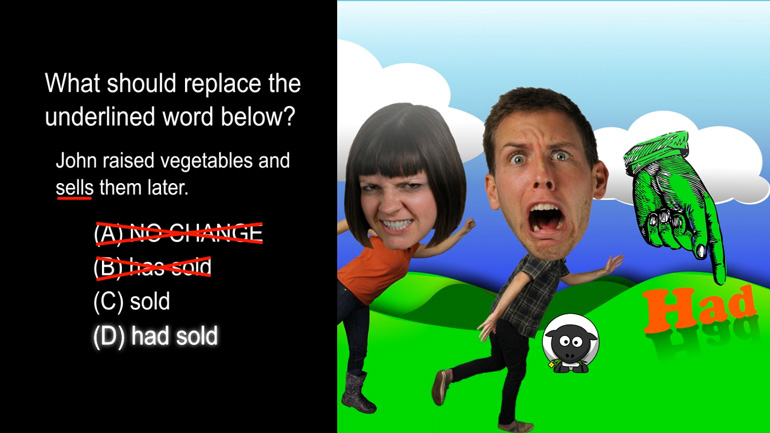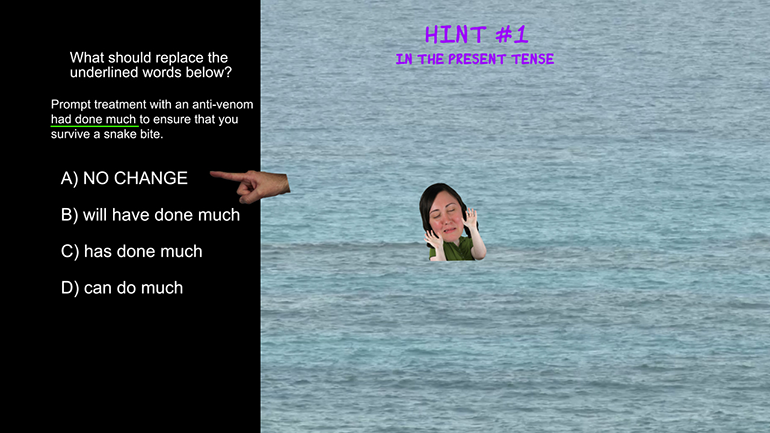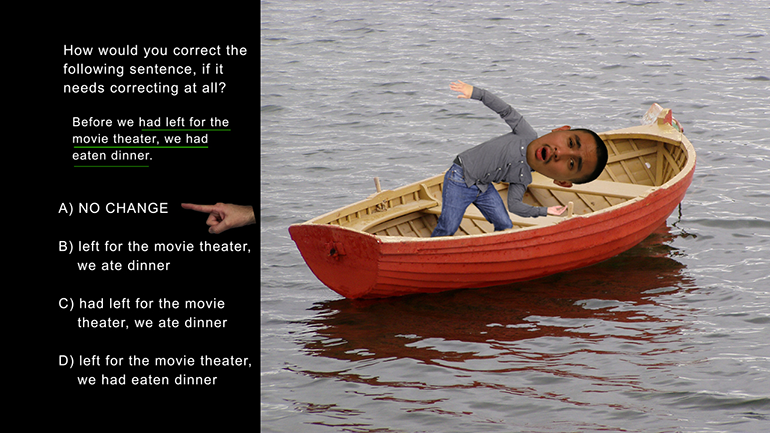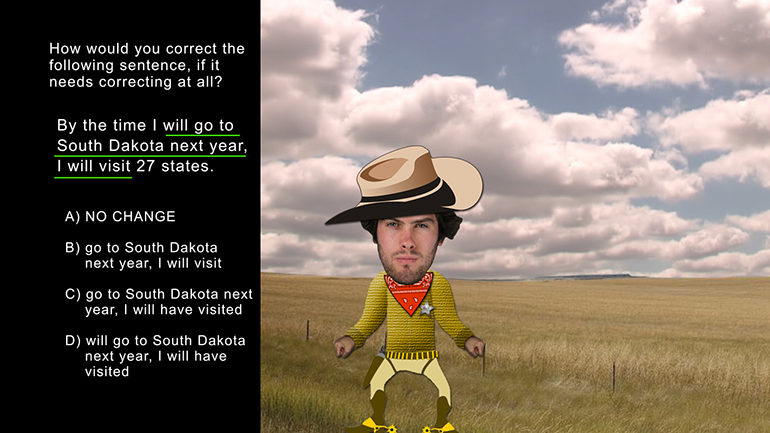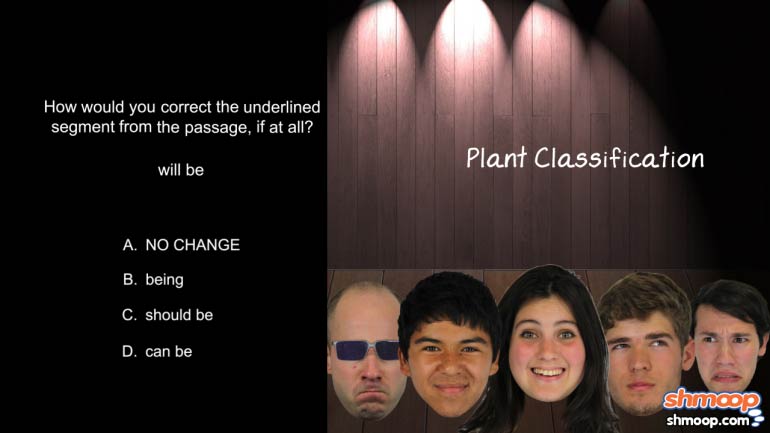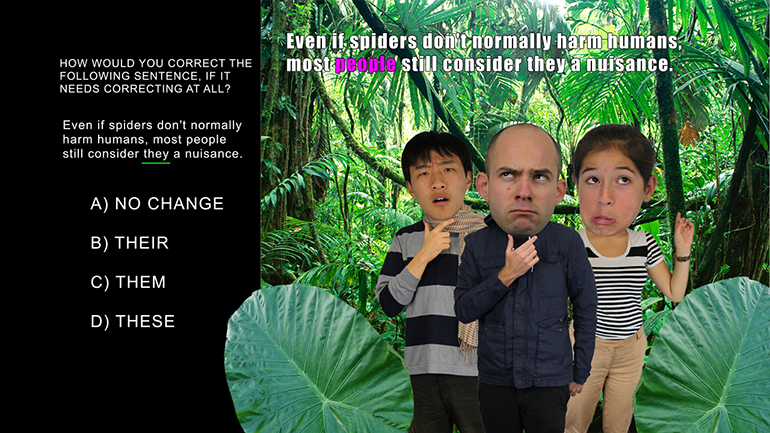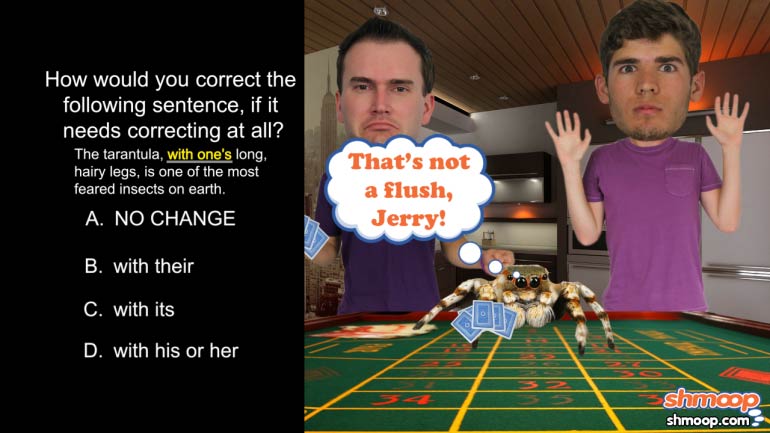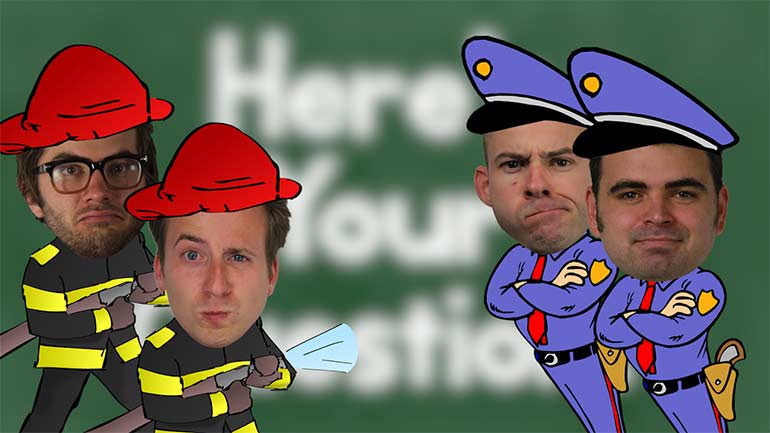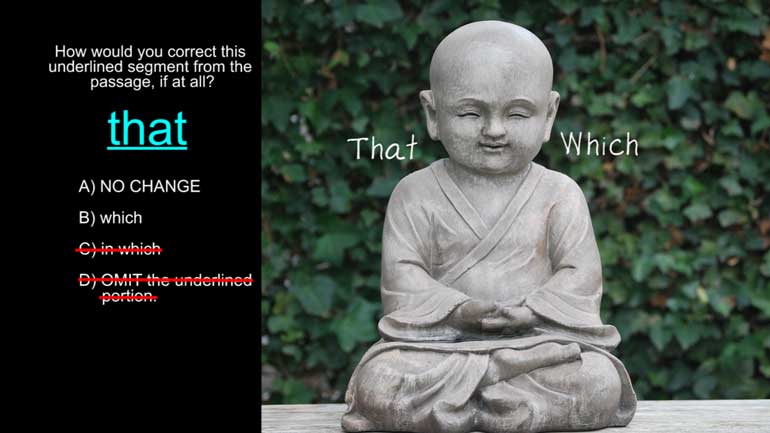ShmoopTube
Where Monty Python meets your 10th grade teacher.
Search Thousands of Shmoop Videos
English Videos 234 videos
ASVAB Word Knowledge: Word Roots, Prefixes, and Suffixes Drill 1, Problem 1. Which of these words is closest in meaning to incoherent?
AP English Literature and Composition 1.4 Passage Drill 1. Which of the following best describes the speaker's attitude towards immortality?
AP English Literature and Composition 1.5 Passage Drill 1. In the third paragraph, how does the author foreshadow a coming tone shift?
ACT English 3.3 Passage Drill 185 Views
Share It!
Description:
ACT English : Passage Drill 3, Problem 3. Which choice best fits into the sentence?
Transcript
- 00:03
Here’s your Shmoop du jour, brought to you by storms of frogs.
- 00:07
Bad for frogs, great for the nation of France.
- 00:21
How would you correct this underlined segment from the passage, if at all?
- 00:25
that?
- 00:26
And here are the potential answers...
Full Transcript
- 00:31
Let’s start the elimination process by nixing the choices that don’t make any sense.
- 00:36
Because...ya know...as a general rule, sentences that
- 00:38
don’t make sense are frowned upon in English language circles.
- 00:42
Option (D) is the worst offender.
- 00:43
Omitting the underlined portion turns this sentence into gibberish. Check it out:
- 00:48
"But tornadic waterspouts can reach 100 miles per hour, can still be quite destructive.”
- 00:53
Clearly we need some kind of word to connect the last phrase to the main sentence.
- 00:57
Otherwise, no one will know what this meteorologically obsessed writer is talking about.
- 01:02
OK, now let’s point our lasers at the second nonsensical option: choice (C).
- 01:06
We’ll read the sentence (C)’s way: “But tornadic waterspouts can reach 100 miles per
- 01:11
hour, in which can still be quite destructive.”
- 01:14
Yeah, that sounds weird. This is because “in which” is a preposition used to signal when
- 01:19
something is contained within something else.
- 01:22
The final phrase isn’t trying to tell us what’s inside of “100 miles per hour,”
- 01:25
so we can definitely get rid of option (C).
- 01:27
Now we’re left with choices (A) and (B),
- 01:29
which ask us to deal with the never-ending conundrum of “that” vs. “which.”
- 01:33
Really, it’s not a conundrum because it’s a question with an easy answer.
- 01:37
We use “that” to introduce a phrase that’s essential to a sentence. See what we did there?
- 01:44
We’ll say the sentence again minus the final phrase. “We use ‘that’ to introduce a phrase.”
- 01:49
Something was lost, right?
- 01:51
If this were all we said before, our sentence would’ve been remarkably unhelpful, because
- 01:55
it wouldn’t have identified the type of phrases the word “that” introduces.
- 02:00
Let’s try this test on our sample sentence and see how essential the final phrase is.
- 02:03
“But tornadic waterspouts can reach 100 miles per hour.” Hm, seems fine to us.
- 02:08
The part about these winds being destructive isn’t totally necessary to the meaning of the sentence.
- 02:12
This means that “that” isn’t necessary either.
- 02:15
Therefore, we can cross out (A) and dub (B) the correct answer, since we use “which”
- 02:19
to introduce phrases that are nonessential.
- 02:21
Because who doesn’t already know that 100 mile per hour winds can be destructive?
Related Videos
ACT English: Punctuation Drill 2, Problem 2. Where should the semi-colon be placed?
ACT English: Punctuation Drill 3, Problem 1. How should this sentence be changed so that it is grammatically correct?
ACT English: Punctuation Drill 3, Problem 2. How should we properly hyphenate the words in this sentence?
ACT English: Punctuation Drill 3, Problem 4. Which choice best formats this list of items?
ACT English: Punctuation Drill 2, Problem 1. Which choice of punctuation best completes the sentence?
